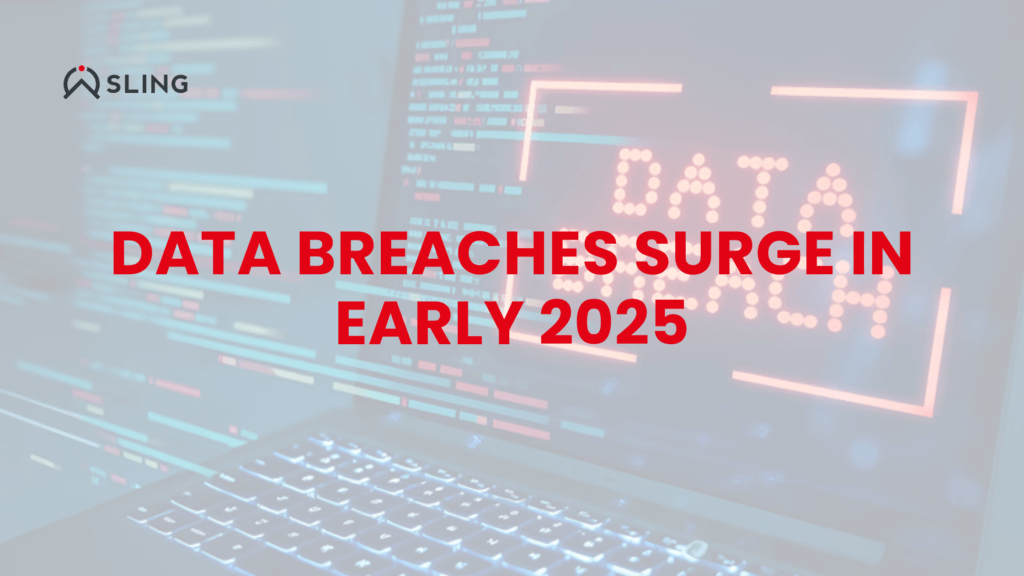The digital landscape of 2025 is proving to be a volatile space, marked by an alarming escalation in data breaches. While the promise of technological advancement continues to unfold, so too does the relentless ingenuity of cybercriminals. Reports flooding in from across the globe paint a stark picture: data breaches are not just frequent, they are becoming increasingly sophisticated and impactful.
The sheer volume of compromised data in the first few months of 2025 alone is staggering. While pinning down an exact, real-time count remains elusive, the trends are undeniable. We are witnessing a surge fueled by several key factors:
Ransomware: A Persistent Plague
Ransomware attacks continue to dominate the headlines. Cybercriminals, armed with ever-evolving encryption techniques, are holding organizations hostage, demanding exorbitant ransoms for the return of critical data. The financial and reputational damage inflicted by these attacks is crippling, forcing many victims to choose between paying the ransom or facing devastating operational disruptions.
The Vulnerable Supply Chain
The interconnectedness of modern businesses has created a complex web of vulnerabilities. Supply chain attacks, where cybercriminals exploit weaknesses in third-party vendors and suppliers, are becoming increasingly common. These attacks allow bad actors to gain access to a vast network of sensitive data through a single point of entry.
AI: A Double-Edged Sword
The rise of artificial intelligence has brought with it both immense potential and significant risks. Cybercriminals are leveraging AI to automate and enhance their attacks, making them more sophisticated and difficult to detect. AI-powered phishing campaigns, for instance, are becoming increasingly convincing, fooling even the most vigilant users.
The Expanding Attack Surface: IoT and Beyond
The proliferation of Internet of Things (IoT) devices has expanded the attack surface exponentially. From smart home appliances to industrial control systems, these devices often lack robust security measures, making them easy targets for cybercriminals. Additionally, cloud storage vulnerabilities and the sheer amount of data being generated daily, increases the amount of potential data that can be stolen.
Examples from Early 2025
| Company | Date | Details | Business Impact | Source |
| UnitedHealth | January 2025 | Compromised sensitive health insurance information, medical records, and financial details of approximately 190 million individuals. Disrupted claims processing and billing, causing widespread delays in patient care. | Over $3 billion in losses, damaged reputation, and eroded public trust. | Reuters |
| TalkTalk | January 2025 | Affected 18.8 million customers, compromising names, email addresses, IP addresses, and phone numbers via a third-party vulnerability. | Significant reputational damage, potential regulatory fines, and increased customer churn. | SecurityWeek |
| PowerSchool | January 2025 | Compromised student and staff data at schools across the US and Canada, including names, addresses, Social Security numbers, medical information, and grades. | Widespread concern among parents and educators, increased cybersecurity spending by schools, and legal and reputational damage to PowerSchool. | NBC News |
| DISA Global Solutions | February 2025 | Compromised highly sensitive personal information of 3.3 million people, including Social Security numbers and financial details. | Raised concerns about background check security, and caused legal, financial, and reputational damage. | CybersecurityDive |
The Path Forward
In the face of this escalating threat, organizations must prioritize cybersecurity. This includes:
- Implementing robust security measures, such as multi-factor authentication, encryption, and intrusion detection systems.
- Conducting regular security audits and vulnerability assessments.
- Providing comprehensive cybersecurity training to employees.
- Strengthening supply chain security.
- Staying informed about the latest threats and vulnerabilities.
The fight against cybercrime is an ongoing battle. In 2025, vigilance and proactive security measures are more critical than ever. As technology continues to evolve, so too must our defenses.



